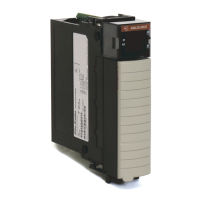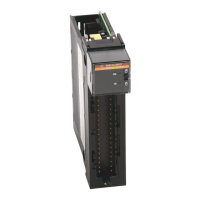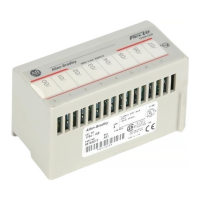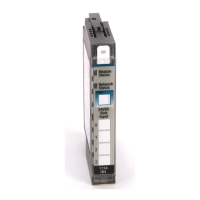194 Rockwell Automation Publication 1756-UM540E-EN-P - December 2017
Appendix A Analog I/O Module Tag Definitions
Output Tags
The following table describes the Output tags associated with the
1756-IRT8I module.
Ch[x].CalGoodHighRef BOOL Indicates that a valid High Reference signal has been
sampled on this channel.
• 0 = Valid High Reference signal
has not been sampled on this
channel
• 1 = Valid High Reference signal
has been sampled on this
channel
Ch[x].CalBadHighRef BOOL Indicates that an invalid High Reference signal has been
sampled on this channel.
You must correct this condition to successfully calibrate
the module.
If calibration is aborted with an invalid High Reference
signal, the I.Ch[x].CalibrationFault tag is set for this
channel until a successful calibration is performed.
• 0 = Invalid High Reference
signal has not been sampled on
this channel
• 1 = Invalid High Reference
signal has been sampled on this
channel
Ch[x].CalSuccessful BOOL Indicates calibration on this channel is complete and the
Calibrating state has been exited.
This tag remains set after valid calibration for 1000
samples.
• 0 = Calibration was not
successful
• 1 = Calibration was successful
and calibrating state has been
exited.
Ch[x].RateOfChange REAL Indicates the change in channel data since last sample in
Engineering Units/Second.
Value representing the rate
of change
Ch[x].Data REAL Indicates channel data in scaled Engineering units. Any positive or negative value.
Determined by how you set the
scaling parameters on the channel.
For more information, see Scaling
on page 32.
Timestamp DINT[2] 64-bit timestamp value that indicates when all eight
channels were last sampled.
This value is provided in terms of CIPSync time.
CIPSync Timestamp data
RollingTimestamp DINT 16-bit timestamp that ‘rolls’ from 0…32,767 ms.
Compatible with existing PID/PIDE instructions to
automatically calculate sample deltas. With this module,
this PID/PIDE instruction uses the RPI because there is no
RTS available.
For more information on the Rolling Timestamp, see
page 23.
0…32,767 ms;
where 1 ms = 1 count
Table 32 - 1756-IRT8I Module - Input Tags (continued)
Tag Name Data Type Definition Valid Values
Table 33 - 1756-IRT8I Module - Output Tags
Tag Name Data Type Definition Valid Values
Ch[x].LLAlarmEn BOOL Enables the Low Low Process alarm. • 0 = Alarm is disabled
• 1 = Alarm is enabled
Ch[x].LAlarmEn BOOL Enables the Low Process alarm. • 0 = Alarm is disabled
• 1 = Alarm is enabled
Ch[x].HAlarmEn BOOL Enables the High Process alarm. • 0 = Alarm is disabled
• 1 = Alarm is enabled
Ch[x].HHAlarmEn BOOL Enables the High High Process alarm. • 0 = Alarm is disabled
• 1 = Alarm is enabled

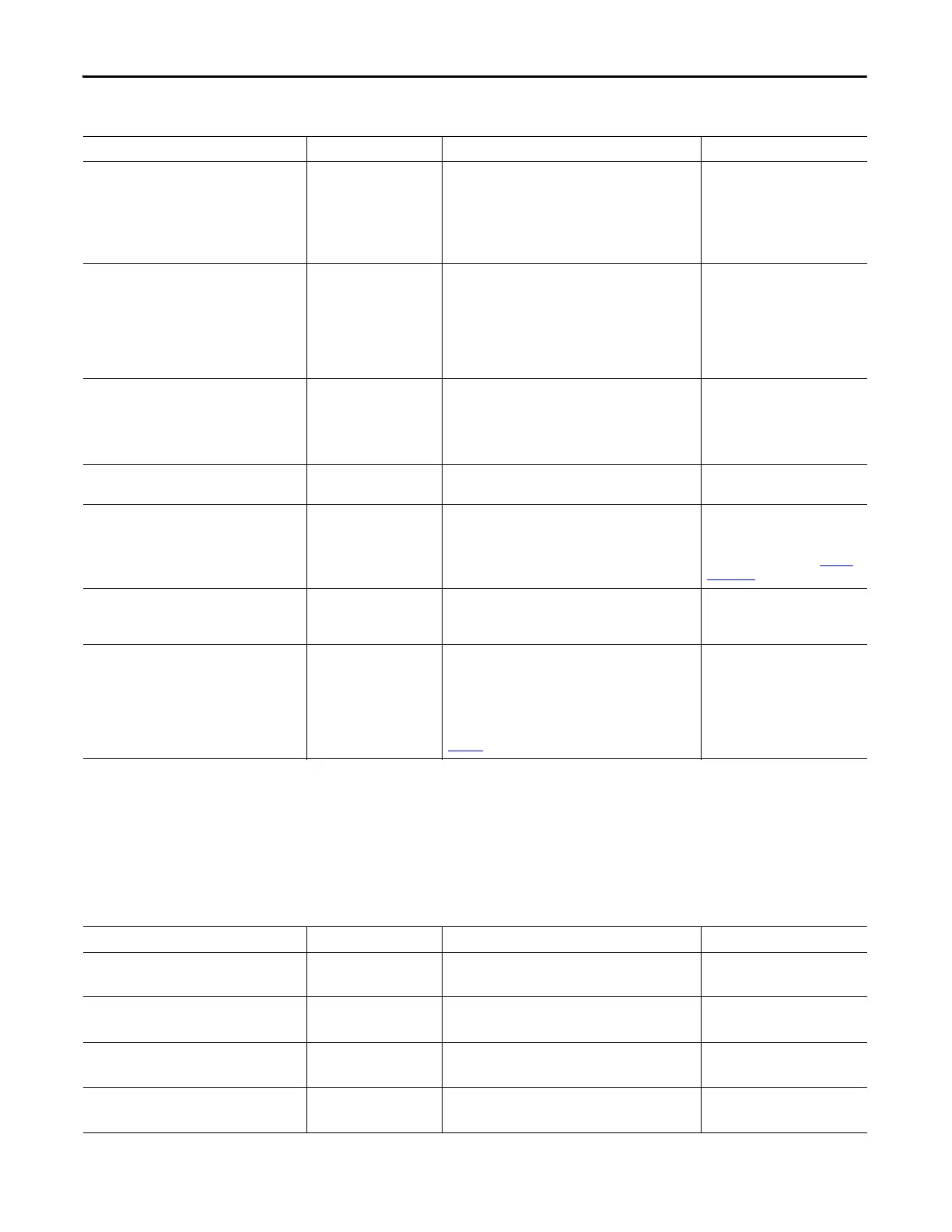